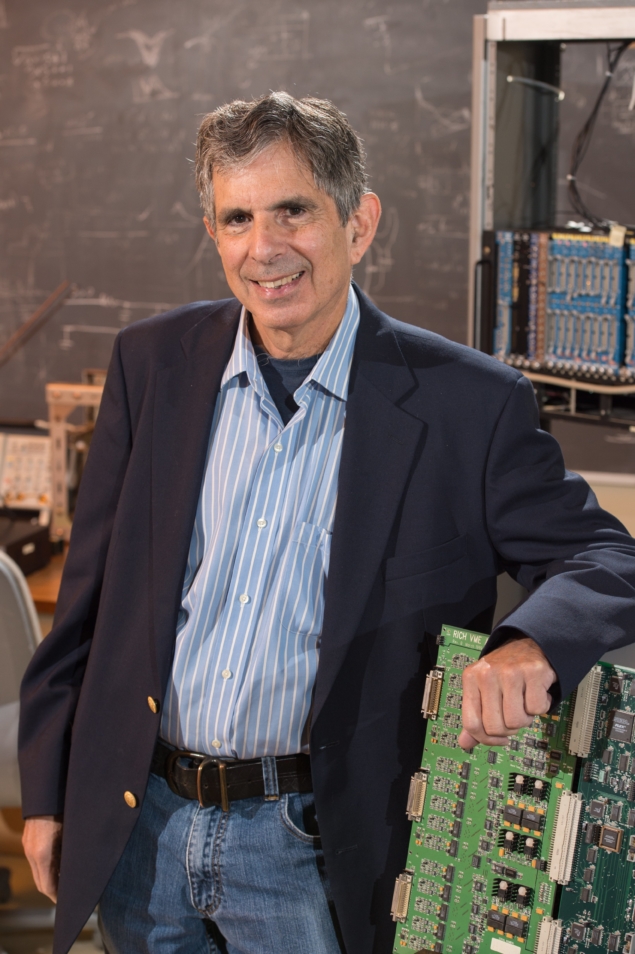
Sheldon Stone, who passed away on 6 October, was one of the foremost physicists of his generation. In terms of creativity and productivity he had few equals in heavy-quark physics worldwide. His skills in leadership, physics analysis and instrumentation served our field well.
Sheldon had a central role in the success of the CLEO experiment at the Cornell Electron Storage Ring, which over a period of almost 30 years laid the foundations for our current understanding of heavy-flavour physics. He served as both CLEO analysis coordinator and co-spokesperson, and had a leading role in many important discoveries such as the observation of the B+, B0, and Ds mesons. In 2000 he was one of the intellectual leaders who proposed to convert CLEO into a charm factory, subsequently leading the measurement of the charm-decay constants fD+ and fDs. These and other measurements demonstrated the applicability of lattice-QCD calculations of hadronic effects in the weak decays of hadrons with a heavy quark with precision of a few-percent, thereby enabling similar calculations to be used with confidence to interpret key measurements by other flavour-physics experiments worldwide.
His advocacy of the BTeV project at Fermilab was also vital in making the case for a forward flavour-physics detector at a hadron collider
In 2005 Sheldon became a member of the LHCb collaboration, where his and his group’s contribution to the physics exploitation of the experiment was second-to-none. Prominent examples include the first measurement of the beauty-production cross-section at the LHC, and a series of publications measuring CP-violating observables in time-dependent decays of Bs mesons. In 2015 LHCb published the first observation of structures consistent with five-quark resonances – “pentaquarks” which were predicted at the dawn of the quark model but had evaded discovery for over 50 years until Sheldon and a small team of colleagues uncovered their existence in the LHCb dataset. This result has had an enormous impact on the field of hadron spectroscopy.
Sheldon also led the design and construction of novel and high-performance detectors underpinning CLEO’s outstanding physics output. These include a thallium-doped near-4π caesium-iodide calorimeter (the first application of a precision electromagnetic calorimeter to a general-purpose magnetic spectrometer) and a Ring-Imaging Cherenkov Counter providing four-sigma kaon-pion separation over the full accessible momentum range.
His advocacy of the BTeV project at Fermilab was also vital in making the case for a forward flavour-physics detector at a hadron collider. This led him to be heavily involved in shaping phase one of the LHCb upgrade project, serving as upgrade coordinator for three years during the preparation of the Letter of Intent, and recently in making innovative proposals for the phase-two upgrade. At the time of his passing, Sheldon was deputy project leader of the upstream tracker, a project that he and his group proposed and led for a decade, and is currently undergoing final assembly. This silicon-strip based detector will play an essential role in both the triggering and offline event reconstruction from Run 3.
Exceptionally effective at guiding others both junior and senior, Sheldon was a superb mentor to graduate students and a wonderful person to collaborate with. He was known to have a strong personality. He was direct and honest, and if you won his respect he was a tremendous friend.
Sheldon’s contributions to our field were at the highest level, recognised most recently with the American Physical Society Panofsky Prize in 2019. For over 30 years he also formed a formidable scientific and life partnership with physicist Marina Artuso who survives him.








